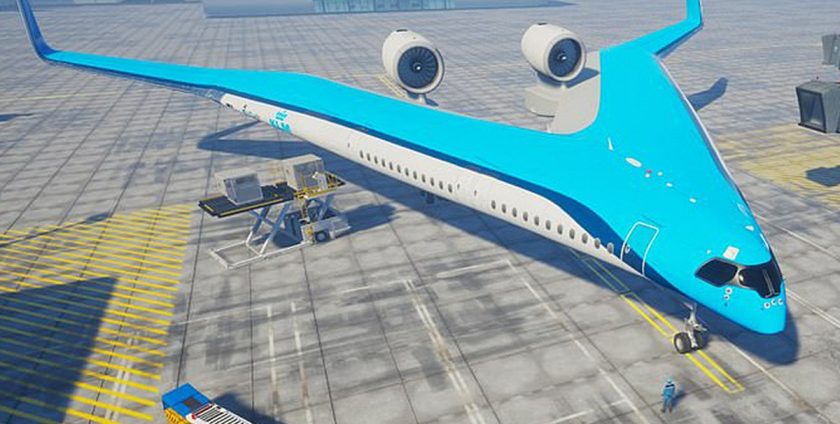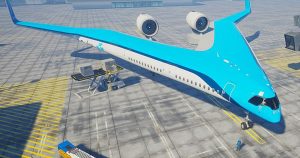
- By: News
- 0 comment
- Dutch airline KLM will help fund a futuristic v-shaped plane whose aerodynamic design will make it more fuel-efficient.
- The “Flying V” will carry passengers, cargo, and fuel tanks in its wings. The plane is still in its early phases, and is unlikely to be in service before 2040.
- Although it has many of the same characteristics as an Airbus A350, the v-shaped plane will use 20% less fuel.
- The Dutch avation sector is trying to cut its CO2 emissions by 35% by the end of 2030.
- For more, go to Business Insider SA.
Dutch airline KLM is funding the development of a v-shaped airplane that will seat passengers in its wings to make it more fuel-efficient, the company announced Monday.
Its futuristic shape will make the “Flying V” lighter and more aerodynamic, KLM said. Its designers claim it will need 20% less fuel than an Airbus A350, today’s most advanced aircraft.
A protoype version of the plane could be ready as early as fall 2019, researchers said. But a real-world version of the plane would likely not enter service until at least 2040, according to CNN.
The idea for a sustainable aircraft that holds passengers, cargo, and fuel tanks in its wings started with Justus Benad, who was a student at Berlin’s Technical University at the time.
It was further developed by the Delft Technical University in the Netherlands, which is now cooperating with KLM.
Like the advanced Airbus A350, the “Flying V” will be able to carry 314 passengers and 160 square meters (1722.23 square feet) of cargo, KLM said. It will also have the same wingspan, meaning it can fit the same gates, runways, and hangars.
But the V-shaped plane will be able to travel long-distance flights more sustainably, according to the company.
Dr. Roelof Vos, project leader at TU Delft, said in a statement: “The Flying-V is smaller than the A350 and has less inflow surface area compared to the available amount of volume. The result is less resistance. That means the Flying-V needs less fuel for the same distance.”
The plane also uses the most fuel-efficient turbofan engines that exist, according to KLM. While the current model still uses kerosene, it can be adapted to use electric turbofans in the future.
The “Flying V” would help make the Dutch aviation sector meet its sustainability goals, Dr. Vos said.
As passengers fly further distances and more often, the sector wants to decrease aviation CO2 emissions by 35% by the end of 2030.
“Our ultimate aim is one of emission-free flight,” Dr. Vos said.
Researchers will present their first flying protoype in October, according to TU Delft. The plane will fly at low speeds to test if the model will remain stable.
https://www.businessinsider.co.za/flying-v-klm-funds-plane-that-seats-passengers-in-wings-2019-6



